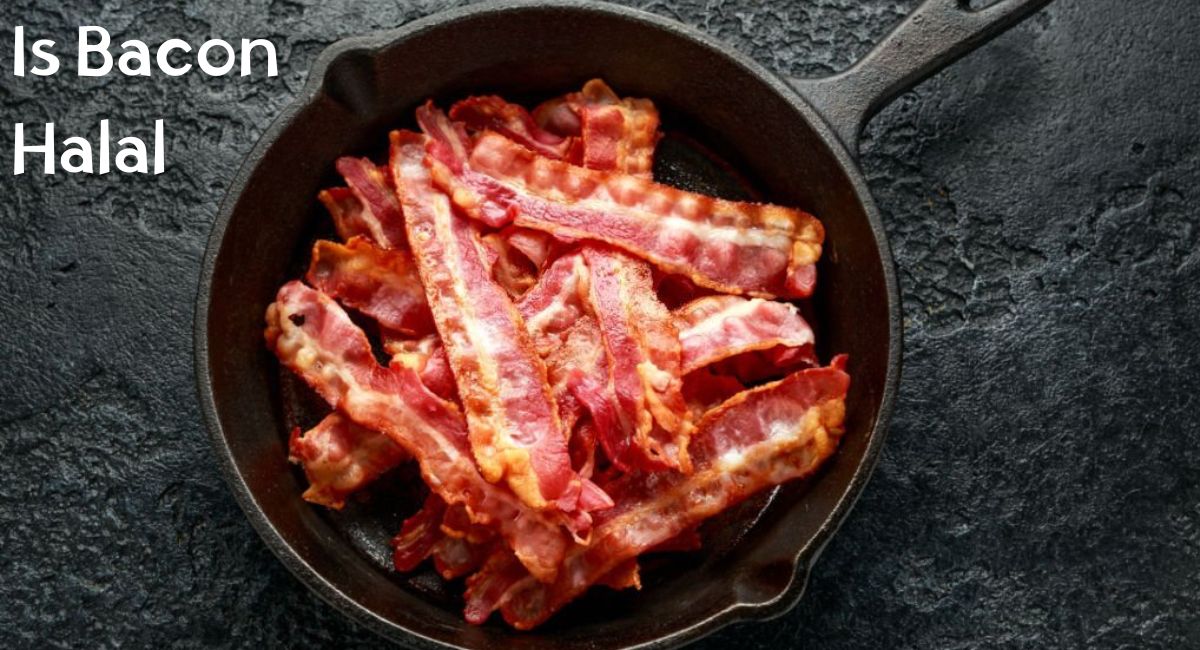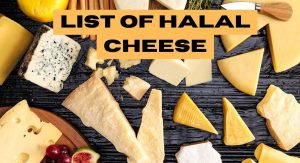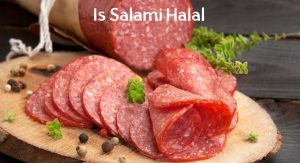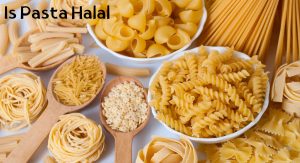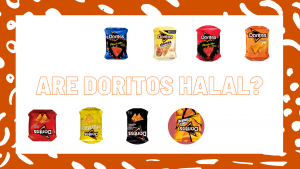The question of whether bacon is halal or permissible according to Islamic dietary guidelines is a topic of interest and discussion among Muslims. Bacon, commonly associated with pork, is widely known to be haram or forbidden in Islam. However, the concept of halal bacon introduces the possibility of alternative meat sources and preparation methods that align with halal principles.
In this article, we will delve into the intricacies of halal bacon, exploring the types of meat that can be used, the process involved, and the considerations that determine its halal status. Understanding the nuances of halal bacon will help individuals make informed decisions about incorporating it into their dietary choices while adhering to their religious beliefs and practices.
Is Bacon Halal
No, bacon is not halal. In Islam, pork and its by-products are considered haram (forbidden). Therefore, traditional bacon made from pork is not considered halal. Pork is prohibited in Islamic dietary guidelines.
He has forbidden you only dead animals, and blood, and the swine, and that which is slaughtered as a sacrifice for other than God.
Quran 2:173
However, there are alternative options available for those who follow halal dietary practices. Halal bacon can be made using different meats, such as beef or turkey, as long as they adhere to halal guidelines. These guidelines include the animal being slaughtered and prepared according to Islamic principles.
What Are the Islamic Guidelines for Meat to Be Considered Halal
To be considered halal, meat must fulfill the following conditions:
- The animal to be slaughtered should be lawful.
- The meat should not be a forbidden cut or animal, such as pork or reptiles.
- The slaughter of the animal must be done in the name of Allah (God).
- The person performing the slaughter must be a Muslim who is mentally sound and knowledgeable of the Islamic slaughtering procedures.
- The instrument used for slaughter must be very sharp to ensure humane slaughter.
- The animal must be conscious at the time of slaughter.
- The animal must be hung upside down and allowed to bleed dry.
- The meat must not be contaminated with any haram (forbidden) substances.
It is important to note that halal meat must come from a supplier that uses halal practices, and the slaughter of the animal must follow specific guidelines
What is Halal Bacon
Halal bacon refers to a type of bacon that is prepared according to Islamic dietary guidelines, making it permissible (halal) for consumption by Muslims. It can be made using a variety of different meats, as long as they are halal.
This means that the meat used for halal bacon must be sourced from an animal that has been slaughtered, butchered, and cured in accordance with Islamic guidelines.
The specific type of meat used can vary, and it can include beef, turkey, chicken, lamb, or other permissible meats. The choice of meat depends on personal preference and availability.
The process of making halal bacon involves curing the meat in a manner that resembles the curing process of traditional bacon. The meat is typically seasoned with spices, salt, and other flavorings, and it may also undergo smoking or cooking processes to enhance its taste and texture. The goal is to create a product that has a similar appearance and flavor to traditional bacon while adhering to halal standards.
Halal bacon can be used as a substitute for pork bacon in various dishes. It can be fried, grilled, or baked and used in similar ways to traditional bacon, such as in sandwiches, salads, breakfast meals, or as a flavoring ingredient in other dishes.
It is worth noting that the availability of halal bacon may vary depending on the region and the specific halal food products offered in local markets. There are also brands that specialize in producing halal-certified bacon. Checking for proper halal certification or seeking guidance from halal-certifying organizations can help ensure that the bacon meets the necessary requirements for halal consumption.
Is Turkey Bacon Halal
Yes, Turkey bacon can be considered halal if it is slaughtered & processed in accordance with the Islamic law. It is essential to follow the guidelines and look for reliable halal certification labels or sources when purchasing beef to ensure its compliance with halal standards.
Turkey bacon is a type of bacon that is made from chopped, formed, cured, and smoked turkey meat. It is commonly marketed as a low-fat alternative to traditional pork bacon and can be used as a substitute for bacon in dishes where religious dietary laws forbid the consumption of pork products, such as in halal (Islamic) and kashrut (Jewish) diets.
The process of making turkey bacon involves chopping or grinding turkey meat and adding seasonings and preservatives. The mixture is then formed into bacon-like strips that can be cooked in a similar manner to traditional bacon, such as pan-frying or deep-frying.
Turkey bacon gained popularity as a healthier alternative to pork bacon due to its lower fat content. It is often preferred by individuals who are conscious of their saturated fat and calorie intake. A serving of turkey bacon typically has less saturated fat and fewer calories compared to a serving of traditional pork bacon.
The history of turkey bacon can be traced back to the 1980s when it was introduced as an alternative to pork bacon. Its popularity has grown over the years, appealing to those who do not consume pork for various reasons, including religious and dietary preferences.
While turkey bacon offers a different flavor and texture compared to pork bacon, it has its own merits and is enjoyed by many people as a flavorful and healthier alternative. However, it’s important to note that turkey bacon may still contain saturated fat and sodium, so moderation is advised when including it in a balanced diet. For a more in-depth analysis, read our is turkey bacon halal guide.
Is Beef Bacon Halal

Yes, beef bacon can be considered halal if it is obtained from a permissible animal and slaughtered & processed in accordance with the Islamic law. Beef is a meat that comes from cattle like cows, buffalo, and bison all of which are permissible in Islam. However, it is essential to follow the guidelines and look for reliable halal certification labels or sources when purchasing beef to ensure its compliance with halal standards.
Beef bacon offers a unique alternative to traditional pork bacon, providing a similar taste and texture but with the distinct flavor of beef. It is typically made from beef belly or the navel area.
While pork bacon has been the predominant type of bacon throughout history, beef bacon has also had its place. In America, there is a lesser-known but significant history of alternative forms of dry-cured meats, including bacon derived from 100% beef navel.
Beef bacon offers a delicious option for those who do not consume pork or prefer the taste of beef. It can be used in a variety of dishes, similar to pork bacon, such as breakfast dishes, sandwiches, salads, and more. Its smoky, salty, and beefy flavor adds a unique twist to recipes.
Is Chicken Bacon Halal
The permissibility of chicken bacon in Islam depends on whether it meets the criteria for halal meat consumption, including the sourcing of permissible chicken and adherence to proper Islamic slaughtering practices. Consulting with an Islamic scholar or a halal certifying authority is recommended to obtain a more precise ruling.
Chicken bacon is a thin strip of chicken meat that is cured, smoked, and sliced similar to traditional bacon. It serves as an alternative for individuals who do not consume pork due to dietary, religious, or personal preferences.
Consuming chicken bacon offers several potential advantages over traditional pork bacon. It typically contains less fat and fewer calories than pork bacon, making it a healthier option for those watching their fat intake.
Additionally, it may have a higher protein content per strip due to the reduced fat content and more meat. Chicken bacon may also require less salt to cure, potentially resulting in lower sodium levels, which can be beneficial for individuals following low-salt diets.
Is Veal Bacon Halal
According to Islamic guidelines, veal bacon is considered halal as long as it is prepared and slaughtered in accordance with Islamic conditions. The permissibility of consuming veal itself has been established as long as the slaughtering is performed correctly. Therefore, if the veal used for making bacon is sourced and prepared in a halal manner, veal bacon is considered permissible for consumption in Islam.
Veal bacon is a delicious and unique alternative to traditional pork bacon. It is made from the meat of young calves, typically from the belly or loin, and is prepared in a similar way to pork bacon.
This type of bacon is known for its leaner profile compared to pork bacon and has a milder, more delicate flavor. It is often cured with salt, sugar, and other spices, and may be smoked to enhance its flavor. When cooked, veal bacon has a crisp texture and a slightly sweet, savory taste.
Veal bacon is available in various forms, including strips, slices, and slabs, and can be used in a variety of dishes such as sandwiches, salads, and breakfast meals. It provides a halal and healthier option for individuals who prefer or require an alternative to pork bacon.
Halal Alternatives to Bacon

There are several halal alternatives to bacon that can be used in recipes or as a substitute for religious reasons. Here are some options:
- Macon: Macon is a cured and smoked form of mutton that is prepared in a similar manner to bacon, with the meat being either dry cured with large quantities of salt or wet cured with brine and then smoked. It is used as a bacon substitute for religious groups such as Jews and Muslims, whose faith does not allow the consumption of pork.
- Tempeh Bacon: Tempeh bacon is a vegan alternative to bacon made from tempeh, a fermented soybean product. It is a good source of protein and low in fat. Tempeh bacon has a smoky, salty, and slightly sweet flavor and a crunchy texture. It is easy to make at home and can be cooked in a pan or baked in the oven.
- Salmon Bacon: Salmon bacon is a type of bacon made from salmon belly, which is considered by many to be the tastiest cut of the salmon. It is dried, cured in natural spices, and then hot smoked over hardwood. There are several recipes available online for making salmon bacon at home, such as this one that involves slicing smoked salmon into small pieces and baking them in the oven.
- Soy Bacon: Soy bacon is a vegan alternative to traditional bacon made from soy protein. It is often flavored with smoky and savory seasonings to mimic the taste of bacon. Soy bacon provides a similar texture and flavor profile to traditional bacon, making it a popular choice among vegans and those looking for plant-based alternatives.
- Mushroom Bacon: Mushroom bacon is a vegetarian and vegan substitute for bacon made from sliced mushrooms. The mushrooms are typically marinated or seasoned with ingredients like soy sauce, liquid smoke, and spices to achieve a smoky and savory flavor. When cooked, mushroom bacon has a chewy texture and offers a rich umami taste. It can be used as a topping for sandwiches, salads, or enjoyed on its own as a snack.
- Seitan Bacon: Seitan bacon is a vegan bacon substitute made from seitan, a protein-rich meat alternative made from wheat gluten. It is seasoned with smoky flavors to mimic the taste of traditional bacon. Seitan bacon has a chewy texture and can be used in various dishes, such as vegan BLTs or as a side for a vegan full-English breakfast.
- Coconut Bacon: Coconut bacon is a vegan bacon alternative made from coconut flakes. It is seasoned with smoky and savory flavors, often including ingredients like tamari or soy sauce, maple syrup, and spices. The coconut flakes are baked until crispy, creating a texture similar to bacon. Coconut bacon can be used as a topping for salads, sandwiches, avocado toast, or enjoyed as a snack.
- Tofu Bacon: Tofu bacon is a vegan alternative to bacon made from tofu. It typically involves marinating thin slices of tofu in a mixture of smoky and savory flavors, then baking or frying them until crispy. Tofu bacon offers a similar texture to traditional bacon and can be used in sandwiches, salads, or as a topping for other dishes.
- Eggplant Bacon: Eggplant bacon is another vegan bacon substitute that aims to mimic the flavor and texture of traditional bacon. It involves slicing eggplant into thin strips, marinating them in a smoky and savory mixture, and then baking or dehydrating until crispy. The result is a crispy and slightly chewy alternative to bacon that can be used in sandwiches, wraps, salads, or as a topping for dishes.
- Carrot Bacon: Carrot bacon is a vegan bacon alternative that utilizes thinly sliced carrots as the main ingredient. The carrots are typically seasoned with smoky and savory flavors, then baked or fried until crispy. Carrot bacon offers a slightly sweet and smoky taste and can be used in a variety of dishes, such as salads, sandwiches, or as a topping for burgers.
It is important to note that the meat and the bacon must not have come into contact with any non-halal meats throughout the entire curing process. This excludes any meats that are cured in a smokehouse where pork products have also been cured. For this reason, the only truly halal bacon must come from a butcher or company that has been certified as practicing the correct halal procedures.
What is Bacon
Bacon is a type of salt-cured pork made from various cuts, typically the belly or less fatty parts of the back. It is a popular food item enjoyed as a side dish, used as a central ingredient in dishes like the bacon, lettuce, and tomato sandwich (BLT), or used as a flavoring or accent in salads and other recipes. Bacon is known for its smoky and savory taste, and it has become a beloved ingredient in many cuisines worldwide.
The history of bacon stretches back thousands of years. The earliest recorded instances of cured pork belly, which is considered an early form of bacon, can be traced to ancient China around 1500 B.C. The Chinese cured pork bellies with salt, and pigs were already domesticated in China as early as 4900 B.C.
The Romans and Greeks are believed to have learned bacon production and curing through conquests in the Middle East. The Romans played a significant role in improving pig breeding and spreading pork production throughout their empire, including the production of bacon. The word “bacon” itself has roots in various Germanic and French dialects, including the French “bako” and Old High German “bakko,” which both refer to the back of the pig.
In Anglo-Saxon times, the Middle English term “bacon” or “bacoun” was used to refer to all pork in general. The English bacon tradition dates back to the Saxon era in the 1st millennium AD, and it has become an integral part of British culinary traditions and the English language.
Over the centuries, bacon has continued to be enjoyed in various forms and preparations. In modern times, bacon has gained immense popularity and has become a cultural phenomenon. It has found its way into numerous culinary creations, such as bacon-infused cupcakes, chocolates, and even fast-food milkshakes. Bacon-themed events, festivals, and products have emerged, showcasing the widespread influence of bacon in contemporary food and consumer culture.
Types of Bacon

There are various types of bacon, each with its own unique characteristics and flavors. These are just a few examples of the different types of bacon available. Bacon varieties can vary by region and culinary traditions, offering a wide range of flavors and textures to suit different preferences and recipes. Here are some of the types of bacon:
- Slab Bacon: Slab bacon refers to a large, uncut piece of cured and smoked pork with the rind still attached. It can be purchased whole or sliced to order in thin or thick strips.
- Buckboard Bacon: Also known as “cottage bacon,” buckboard bacon is made from pork shoulder, which is also known as pork butt or Boston butt. It is cured and smoked like regular bacon but tends to be meatier in texture.
- Lardons: Lardons are small strips or cubes of bacon used as a flavoring ingredient in various dishes, such as salads, soups, and stews. They add a savory and smoky taste to the dishes they are added to.
- Lap Yuk: Lap yuk is a type of cured bacon originating from China. It is seasoned with spices, soy sauce, and brown sugar, giving it a crispy texture.
- German Bacon: In Germany, bacon is often cured and cooked to be eaten both raw and added to other meals. German bacon has a combination of American bacon and pancetta in terms of appearance.
- Pancetta: Pancetta is an Italian-style bacon made from pork belly that is typically cured with salt and spices but not smoked. It is often used in Italian cuisine as a flavoring ingredient.
- Canadian Bacon: Canadian bacon, also known as back bacon, is made from pork loin. It is brined and smoked, resulting in a leaner and milder flavor compared to traditional bacon.
- Streaky Bacon: Streaky bacon, also known as American bacon, is made from the fat-streaked meat just below the back and side of the hog. It is known for its crispy texture and rich flavor.
- Peameal Bacon: Peameal bacon, commonly known as Canadian bacon, is made from boneless pork loin that is brined and rolled in cornmeal. It is famous in Canadian cuisine, often used in sandwiches or as a breakfast meat.
How is Bacon Made
Bacon is typically made through a process that involves curing and smoking pork belly or other cuts of pork. Here’s how bacon is made:
- Curing: The process begins by rubbing the pork belly with a mixture of salt, sugar, and sometimes additional seasonings like pepper or spices. This helps to preserve the meat and enhance its flavor. The salt draws out moisture from the pork and acts as a preservative. The belly is then left to cure in the refrigerator for a certain period, allowing the flavors to penetrate the meat.
- Resting: After the curing period, the pork belly is rinsed to remove excess salt and other curing ingredients. It is then allowed to rest for a while, typically in a cool environment, to further develop its flavors and allow the meat to firm up.
- Smoking: The next step is smoking the cured pork belly. Traditionally, bacon is smoked using wood chips or sawdust from hardwood trees like hickory, applewood, or maple. The smoking process imparts a distinct smoky flavor to the bacon and helps to further preserve it. The duration of smoking can vary depending on the desired intensity of smokiness.
- Slicing and Packaging: Once the smoking process is complete, the bacon is cooled and sliced into thin strips or rashers. The slices are then packaged for sale, either in vacuum-sealed packs or in other suitable packaging.

How to Cook Bacon
Cooking bacon is a popular method to enjoy its crispy and savory flavors. There are several techniques you can use to cook bacon, depending on your preference and equipment available. Here are some common methods:
- Frying in a Skillet: Start by taking the bacon out of the fridge and letting it come to room temperature for about 5-6 minutes. This helps the bacon cook evenly. Preheat a skillet over medium heat and add the bacon strips. Cook for 2-4 minutes on each side, adjusting the cooking time based on desired crispiness.
- Baking in the Oven: Preheat the oven to around 400°F (200°C). Line a baking sheet with foil for easy cleanup. Place the bacon strips on the baking sheet, making sure they don’t overlap. Bake for about 12-15 minutes, or until the bacon reaches the desired level of crispiness. Remove from the oven and transfer the cooked bacon to a plate lined with paper towels to absorb excess grease.
- Microwaving: Place a few bacon strips between layers of paper towels on a microwave-safe plate. Microwave on high for 4-6 minutes, adjusting the time based on the microwave’s power and desired crispiness. Be cautious when handling the plate as it may become hot. Transfer the cooked bacon to paper towels to absorb any remaining grease.
- Other Methods: There are alternative techniques like grilling or using an air fryer to cook bacon. Grilling requires placing the bacon on a preheated grill and cooking until crispy. When using an air fryer, lay the bacon in a single layer in the basket and cook according to the appliance’s instructions.
Regardless of the cooking method, it’s important to handle hot bacon with care and let it drain on paper towels to remove excess grease. Once cooked, you can enjoy bacon on its own, use it as a delicious addition to various dishes, or incorporate it into recipes for added flavor.
Remember to follow proper safety precautions and adjust cooking times based on the desired crispiness and the thickness of the bacon slices.
What Are the Uses of Bacon

Bacon is a versatile ingredient that is used in various ways to enhance the flavor of dishes or serve as a delicious main component. Here are some common uses for bacon:
- Side Dish: Bacon is often cooked and served as a side dish, particularly during breakfast. It can be enjoyed alongside eggs, pancakes, or toast.
- Sandwiches: One of the most popular uses of bacon is in sandwiches, particularly the classic BLT (bacon, lettuce, and tomato) sandwich. The crispy and savory bacon adds a rich and flavorful element to the sandwich.
- Salads: Bacon bits or crumbled bacon can be used to add a burst of flavor to salads. They provide a salty and smoky taste that complements a variety of greens and vegetables.
- Wrapping: Bacon can be used to wrap other ingredients, such as chicken, scallops, or asparagus, before cooking. This technique adds flavor and moisture to the wrapped food, resulting in a delicious combination of textures and tastes.
- Flavoring: Bacon can be used to add a smoky and savory flavor to various dishes. Bacon fat or drippings can be used as a cooking oil or added to sauces, soups, or stews to enhance the overall taste.
- Appetizers and Snacks: Bacon can be incorporated into appetizers and snacks, such as bacon-wrapped dates, bacon-wrapped jalapeno poppers, or bacon-stuffed mushrooms. These savory bites are often a hit at parties or gatherings.
- Pasta and Pizza: Bacon can be added to pasta dishes like carbonara or used as a topping on pizzas. It brings a smoky and meaty element to these dishes, complementing the other flavors.
- Soups and Chowders: Bacon can be used as an ingredient in soups and chowders to provide depth of flavor. It can be diced and sautéed with other vegetables or added as a garnish to enhance the overall taste of the dish.
- Desserts: Yes, bacon can even be used in desserts! It can be incorporated into sweet treats like bacon maple cupcakes, bacon chocolate chip cookies, or bacon ice cream. The combination of sweet and salty flavors creates a unique and indulgent dessert experience.
- Bacon Fat: Bacon fat, or drippings, can be used as a flavorful cooking oil or as an ingredient in recipes. It can be saved and used to fry eggs, sauté vegetables, or add richness to various dishes.
Remember to enjoy bacon in moderation as part of a balanced diet. Its rich flavor and high fat content should be considered when incorporating it into meals.
Is Bacon Good for Health
Bacon is a popular and flavorful food enjoyed by many, but its health effects can vary depending on various factors such as serving size, preparation methods, and individual dietary needs.
- Nutritional Content: Bacon is primarily composed of pork, salt, fat, and sometimes added sugar. It is relatively low in carbohydrates and provides protein, essential vitamins (such as vitamin B12), minerals (such as selenium), and fats.
- Caloric Density: Bacon is calorie-dense, meaning it contains a significant number of calories in a small serving size. It’s important to consume bacon in moderation and be mindful of portion sizes to avoid excessive calorie intake.
- Fat Content: Bacon is known for its fat content, particularly saturated fat. Saturated fat, when consumed in excess, may increase the risk of heart disease and other health issues. It is advisable to limit saturated fat intake and balance it with other healthier sources of fat.
- Sodium and Additives: Bacon is often cured and smoked, which can result in a higher sodium content due to the use of salt and sometimes nitrates or nitrites. Excessive sodium intake may contribute to high blood pressure. Choosing lower-sodium options or moderating overall sodium intake is recommended.
- Processing and Quality: Bacon is a processed meat product that undergoes curing, smoking, and other preservation methods. Processed meats have been associated with potential health risks, including an increased risk of certain diseases. Opting for high-quality, minimally processed bacon and consuming it in moderation can help mitigate these risks.
- Individual Factors: It’s essential to consider individual dietary needs, preferences, and overall health status when assessing the impact of bacon on health. Moderation, balanced meal planning, and incorporating a variety of nutrient-rich foods are key elements of a healthy diet.
In summary, while bacon can provide flavor and nutrients, it is important to consume it in moderation and consider the overall balance of one’s diet. Making informed choices, opting for higher-quality options, and incorporating a variety of nutrient-dense foods can help maintain a healthy lifestyle. It is always advisable to consult with a healthcare professional or registered dietitian for personalized dietary guidance.
Frequently Asked Questions
1. Is vegan bacon halal?
Vegan bacon, being plant-based and free from animal products, is generally considered halal. It does not contain pork or any ingredients derived from pigs, which aligns with the prohibition of pork in Islam. However, it’s important to check the specific ingredients of vegan bacon products to ensure they do not contain any non-halal additives or flavorings. Halal certification or labels can provide assurance that the product meets halal requirements.
2. Is beef bacon any good?
Beef bacon can be a tasty alternative to traditional pork bacon. It is made from beef belly, which is cured and smoked similar to pork belly. However, beef bacon can be drier and chewier than pork bacon due to the lower fat content in beef. The higher melting point of beef fat also affects its crispiness. While it may not have the exact texture and flavor of pork bacon, beef bacon can still be enjoyable, especially if you prefer beef or are looking for non-pork alternatives.
3. Is turkey bacon already cooked?
Yes, turkey bacon is typically sold as a pre-cooked product. It undergoes a curing and smoking process similar to traditional bacon. Therefore, you can safely consume turkey bacon without further cooking. However, if you prefer it warm or crisp, you can heat it in a skillet, oven, or microwave for a short period to achieve your desired texture.
4. Is chicken bacon processed?
Chicken bacon, like other bacon alternatives, undergoes a process to resemble the texture and flavor of traditional bacon. It is typically made from chopped and formed chicken meat, combined with seasonings and other ingredients to enhance the taste. Therefore, chicken bacon can be considered a processed meat product. It’s important to check the ingredients and choose chicken bacon from reputable sources to ensure it meets your dietary preferences.
5. Can bacon be eaten raw?
No, it is not recommended to eat raw bacon. Bacon is typically cured and smoked, which helps preserve and flavor the meat. Raw bacon may contain harmful bacteria, such as salmonella or E. coli, that can cause foodborne illnesses. It is important to cook bacon properly by frying, baking, or grilling it until it reaches a safe internal temperature of 145°F (63°C). Cooking bacon thoroughly helps eliminate any potential bacteria and ensures its safety for consumption.
